Click to view our Accessibility Statement or contact us with accessibility-related questions






PRODUCTS YOU MAY LIKE
Trending Posts in Audiophile

Simthaniel
Rigs
Modded headphones with qudelix at the core
When I received the Qudelix 5K, I had already modified a pair of Superlux HD-681 headphones. I previously soldered my own balanced connections to the drivers, providing multiple ways to connect and...
Apr 14, 2024

brothamike
A decent set of IEMs
I am in the midst of a 300 hour burn-in but, I will say I am enjoying how this set sounds so far. Before I received these which was btw late by a few weeks, I purchased a Sony/Kimber Kable MMCX...
Apr 12, 2024
merrick97
Should I exchange the PC38X for better headphones?
I bought the PC38X headphones FOR GAMING and they are great, but I have NO use for a Microphone since I don't do competitive gaming and I was wondering if there were better headphone options at a similar price without a headphone, where (presumably) more of the cost was put into making it sound better. I also find that my PC38X don't get quite as loud as I would like and I was wondering if a cheap amp like the iFi Go link would draw a little more volume out of my phones. https://www.amazon.com/dp/B0BN6MM822?psc=1&ref=ppx_yo2ov_dt_b_product_details I went with the PC38X since it was considered the best bang for buck headphones. I care most about using spatial apps like DOlby Atmos and DTS Headphone:X. Suggestions are welcome.
Apr 11, 2024

LostnAmerica
Sound Signature of the Grell Project.
Wondering what type of sound signature the Drop Grell project headphones will have or trying to attain. Any update would be appreciated.
Apr 8, 2024

Fabulous
Looking for a gaming/content audio setup
Hello! I'm looking for recommendations on audio setups. I'd be planning on using it mostly for gaming. Preferably I'd like a pair of large closed back headphones since I have a big head and jaw. I'd also like to hear myself through my mic with mic monitoring. As far as budget goes, I don't really have one. But under 600$ would be nice. I can go higher if needed. The audio setup would be connected to a high performance PC. Thank you in advance for any recommendations!
Apr 4, 2024

1plsd
$10 Drop Coupon Email not sent?
Trying to buy some gear off Drop for the first time. I was told I would receive an email with a welcome to drop $10 off promo. I never received that email. Drop was able to send me emails for my login token and email for Password update. But for some reason the $10 off coupon was never sent to me.
Mar 31, 2024

NMPacella
New here
Hello, I just joined, primarily for the audiophile products. Looking at purchasing the NHT C3 speakers for our new living room. Space is about 15 feet wide by 33 long and they will fire long ways. Space is just for general listening, music room with all equipment is downstairs, so hoping they will fill it with sound nicely. Cheers.
Mar 18, 2024
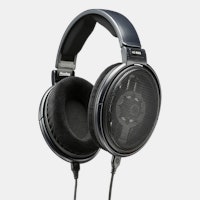
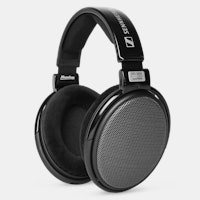

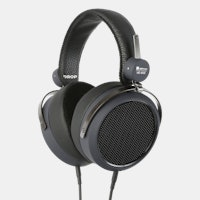
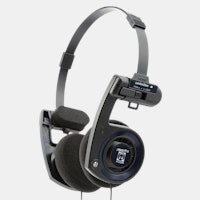
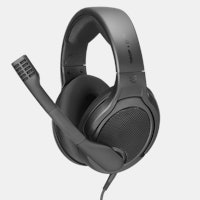
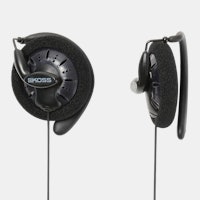
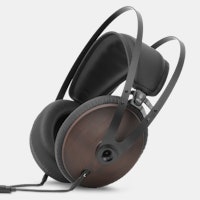
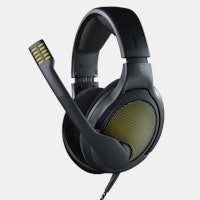
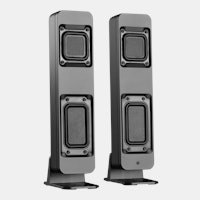
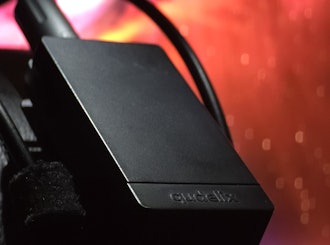
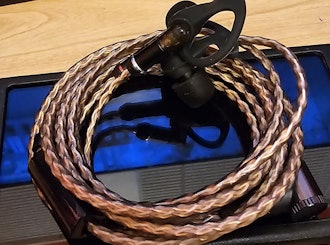
Also, AMB's y1 manages to do just fine on USB power, and puts out 1.5 VRMS. Why do you assume USB power is bad? Proof?
1.5vRMS is not Redbook standard line out and IS a weak signal. USB power has inherent flaws. Again, feel free to read NwavGuy's blog post yourself. You're acting like you're defending the guy, but you're disagreeing with me on basic facts that he makes a point of covering in his post about the ODAC. So if you don't trust me, at least read what the guy you're claiming to be supporting has to say.
Where are your measurements showing that USB power is unstable? Ripple, regulation? Can you prove it goes through the DAC to the output?
If you don't understand the inherent limitations of USB power, then I suggest again you actually read some of the source material you're claiming I disagree with (I don't). USB power induces noise into the circuit that originates from within the computer system driving it, period. Whether or not this has audible noticeable impact on sound quality depends on a huge number of factors, however it very often does (I notice it anyway).
Quoted directly from NwAvGuy's blog post about the ODAC:
"USB POWER CHALLENGES: USB power also presents some challenges:
Potentially Greater Noise - USB power is more of an unknown compared to a dedicated power source. So it requires extra filtering and careful design to avoid degrading the performance of the DAC. This is especially true when you’re aiming for much better than 16 bit performance. The USB powered FiiO E10, Creative X-Fi Go, and NuForce uDAC-2 all promise 24 bit performance but only deliver around 16 bit performance. Likewise, when running from AC power, the latest MacBook Air also fails to deliver better than 16 bit performance from its 24 bit DAC due to extraneous power-related noise.
Audio Output Voltage - USB power can be as low as 4.5 volts, and when you add in losses from power filtering and the DAC/op amp circuitry, you’re lucky to get 4 volts peak-to-peak of output swing without clipping. That works out to 1.4 Vrms which is a significant 3 dB shy of the 2.0 volt Redbook standard for digital devices. That’s 3 dB of potential dynamic range lost and a 3 db drop in level compared to normal home sources (like a CD player, network media player, etc). Indeed most of the USB DACs I’ve tested, and even popular DIY DACs like the AMB gamma, have this shortcoming.
Capacitor Coupled Outputs - A single-ended DAC power supply usually requires an output coupling capacitor to block the 1/2 Vcc voltage at the DAC output. Such a capacitor, to drive a 10K load, needs to be a fairly large value to avoid low frequency roll off and excessive phase shift. It also should be a high quality film, rather than electrolytic, type. But many USB powered DACs, in the interest of saving money and space, use electrolytic or otherwise compromised output capacitors. This is even true of some audiophile DIY designs like the AMB gamma.
Power Related Jitter - Power and ground “pollution” at various frequencies can have a significant impact on jitter performance. Noise from the power supply can, in effect, modulate the digital bit stream creating jitter.
USB Maximum Current Limit - While the USB ports on any PC or laptop made in the last 6+ years can nearly always supply 500 mA of current there are some exceptions. There are a few ultra low power netbooks that have 100 mA USB ports and unpowered USB hubs are also, at least in theory, limited to 100 mA per port. I’m not sure about iPads and Android tablets but I suspect they may be rated for only 100 mA as well."
As I noted above in my prior comments, I did NOT hear any of the tell-tale noise I typically associate with USB self-powered DACs when I listened to the ODAC. So obviously the ODAC has found a way to mitigate this negative effect.
It's interesting how you take my reasoned opinion that has a positive outcome for the product we're discussing and try to set me up for a straw-man attack as if I am stating something outrageous. It's also interesting you attempt to refute my statements by discussing equipment which you readily admit falls into the very exact problem I pointed out, requesting I provide sensor measurements when the manufacturer of the product you used as your example is one of those very companies that claims to "develop by ear" without using instrumentation (AMB).
Good luck with that. I won't be responding to your blatant trolling any further.
You then top it off by claiming that you can't "hear" any of the "tell-tale" noise in USB DACs, but I'm willing to bet money you couldn't statistically differentiate between the two in a double-blind test. Your knowledge and opinion is based off error prone non-blind listening tests and subjective bias. You then perpetuate this by making a bunch of claims where you can't provide a single electrical measurement to back it up.
Then you actually truly engage in a strawman, since the only reason I brought up AMB's y1 was that it provided a strong line output, not for any of it's audio related characteristics (do you even know, or care to know, what is the difference betweent 1.5 VRMS output and true "redbook standard"?). By the way, me bringing it up doesn't absolve you of your failure to provide any data to back your claims up.
Put up evidence to support any of your claims, or shut up. I hate seeing people like you influence others who don't know any better. Prove to your claims to everyone here that USB power is bad, and that the O2 can't drive very high impedance phones.
Quite frankly expecting electrical measurements to support my position is absurd. It's not like I have a dScope III laying around the house (expensive equipment) to generate measurements to post. I seriously doubt you do either. Not only that, as I've stated previously, I don't currently own any of the hardware we're discussing here, but I have had the opportunity to extensively demo it providing me the first-hand experience necessary to make a judgment. So, even if I had the equipment I would be unable to provide measurements of my own.
You're also SIGNIFICANTLY misrepresenting my position in your reply. I said in the ODAC I don't hear any of the tell-tale noise that I associate with USB self-powered DACs. It's EXTREMELY apparent in almost any USB self-powered DAC on the market when you listen without music playing and with your amplifier volume control set slightly above the minimum in a quiet room. Every DAC has a noise floor, and where that is impacts the dynamic range that the DAC can produce when it generates the analog signal. When you have power noise exceeding the noise floor of the DAC it reduces the overall dynamic range that can be achieved in the signal chain. It also has the effect of introducing that noise directly in the signal, which means the noise can be amplified just like any other portion of the analog signal. This is exceedingly undesirable. Hearing power noise, or the harmonic distortions produced from it, does not require golden ears. Almost anyone can hear it.
I readily admitted the one mistake I made earlier, which was a faulty assumption that the ODAC+O2 combo unit (the only one I've heard, I have not heard the ODAC standalone, although they are equivalent in theory) used the input power from the wall-wart to drive both the amplifier and DAC stages, rather than using the power from the USB for the DAC stage. The reason I had made this assumption was directly because of the fact I did not hear noise I would expect from a USB-powered DAC when utilizing it. If anything, you should take this mistake on my part as a boon on the part of the ODAC, as it's certainly the only USB self-powered DAC I've heard that doesn't fail in this regard.
Regarding the line level output, there's 3 basic standards to care about. In purely analog audio, there are two, one intended for professional applications, and one intended for consumer applications. These typically aren't rated in vRMS , but rather in dbU or dbV respectively. Regardless, you can do some math to get a conversion which results in a nominal vRMS of 1.23 (rounding up) or or 0.45 (rounding up) respectively. These are less interesting to me, as these are intended for use in recording and analog playback respectively. However there is also the Redbook standard which describes the CD Digital Audio format, including several specifics of the process of converting the digital signal to analog, and what that line level should be. Disregarding for the moment whether you agree with the Redbook standard, the standard specifies a nominal output voltage of 2vRMS for the analog signal. Per the Redbook standard, as I noted. 1.5vRMS /IS/ a weak output signal for a DAC. Disagree with it all you want, but the statement I made was factual and in accordance to the standard.
As to what the difference in the output levels means, well it has to do with gain characteristics. Since I primarily listen in an environment where I originate using digital audio, typically ripped from CD or SACD, encoded in FLAC and with the end result of driving either high impedance (600Ω typically) or power-hungry orthos, I have a set of things I look for when demoing equipment. By driving the line input of my power amplifier with a weaker line-out signal from the DAC, it has a few immediately obvious effects that allow me to note this without even requiring measurements of the output voltage. The primary obvious thing is that I will have to drive my amplifier harder by increasing the volume level past where I would expect it for that particular test track to get the same volume output level. By requiring an increase in input gain to achieve the desired volume, I also have a higher potential for introducing noise into the signal. If the signal is weak enough, it requires a separate pre-amplifier prior to being connected to the power amplifier, which does introduce additional gain but does so in a more controlled manner. I've yet to demo a DAC that required an external pre-amp to drive my power amplifier, however it would be necessary off of most analog equipment such as a tape deck or turntable, simply because they produce a significantly lower line level signal. This is one of the reasons why you typically see someone employ a "phono pre-amp" combined with a turntable, before introducing the power amplifier.